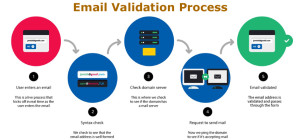Coding is indeed not rocket science. However, launching your software may feel as grueling as launching a rocket. The development and release process is daunting, intricate, and takes forever.
So, by the time you launch your software, your rivals will be colonizing the Moon. Therefore, releasing your software quickly and efficiently, with good quality code is the ticket to gaining a competitive edge.
Adapting Continuous Integration and Continuous Deployment is a significant fix for any custom software development company. It is a brain-child of the DevOps movement that makes building, testing and releasing processes more efficient.
Wanna know how?
Let’s explore!
What is Continuous Integration and Continuous Deployment?
CI/CD is undoubtedly not the silver bullet for exceptional coding. However, it can change the game through the iterative process during the course of development. Organizations that mindfully implement CI/CD can develop more quickly and deploy frequently.
Continuous Integration basically tests changes continuously before merging them into the central repository. The software engineers receive feedback to fix issues and validate changes before merging the code. Continuous Deployment or delivery is a method of rapidly pushing code changes and features. Simultaneously, the developers rigorously test them in a simulated environment.
This continual process of testing, integrating and delivering streamlines software development lifecycle. Now let’s explore the right CI/CD strategies that organizations must implement to boost their SDLC.
Top 6 CI/CD strategies used in the best custom software development company
Now, let’s get deeper into the technological part. Coder alert! Things might get a little complicated here. Following is a breakdown of the most effective 6 CI/CD strategies:
Automated Testing
Automated testing is critical to ensuring the caliber and reliability of software releases in CI/CD pipeline. Developers of the best custom software development company can use it to create scripts. That helps automatically execute tests such as unit testing, integration testing, and end-to-end testing.
- Testing execution becomes faster, enabling programmers to catch bugs and issues early.
- Automated tests minimize the possibility of human error by producing reliable and consistent results.
- Identifying bugs earlier allows developers to fix the issues early and maintain great code throughout development.
- Regression testing ensures that new code modifications do not generate unforeseen side effects by simply rerunning automated tests.
- Developers can readily accommodate large codebases and intricate software systems by automating tests.
Continuous Integration Pipelines
Continuous integration (CI) pipelines automate the merging of code changes into a shared repository. These also automate executing automated tests to verify the changes. Thus, developers constantly merge, test, and release code with the help of continuous integration (CI) pipelines. It ultimately speeds up feedback loops and improves software releases.
- Continuous integration (CI) pipelines help get the most recent code updates from the version control repository.
- These also automate the steps in assembling the code, addressing dependencies, and producing executable files.
- Continuous integration (CI) pipelines are instrumental in ensuring that code modifications work as intended. These pipelines also run automated tests, such as end-to-end, Integration, and unit tests.
- CI pipelines also examine measures related to code quality. That includes code coverage testing, code complexity testing, and adherence to coding standards.
- CI pipelines help produce deployment-ready software for production settings, such as generated binaries or deployable packages.
Containerization and Orchestration
Containerization and orchestration technologies like Docker and Kubernetes are useful in CI/CD.Developers may package and deploy applications in lightweight, portable containers and manage containerized applications at scale.
Maintaining uniformity throughout the development, testing, and production environments lowers the possibility of compatibility problems and configuration drift.
- Container orchestration solutions allow developers to scale containerized applications dynamically based on resource demand. It ensures optimal performance and resource use.
- Containerized applications are portable across many infrastructure environments. Thus, they are easy to deploy in on-premises, cloud, and hybrid environments.
- Compared to conventional virtual machines, these are lighter and use fewer resources. Thus, they improve resource efficiency and lower costs.
- Platforms come with built-in fault tolerance and high availability capabilities, like workload rescheduling and automatic container restarts. These capabilities ultimately guarantee application dependability and uptime.
Infrastructure as Code (IaC)
With Infrastructure as Code (IaC), programmers can utilize automation tools and code to manage and provision infrastructure resources. Additionally, by describing infrastructure configurations in code files, IaC facilitates versioning, repeatability, and consistency across environments.
- IaC guarantees repeatable and consistent infrastructure deployments across diverse settings. Thus, Infrastructure as a Service (IaC) reduces the risk of configuration drift and inconsistencies.
- It allows developers to adjust infrastructure resources dynamically according to workload needs, ensuring optimal performance and economical resource use.
- IaC shortens the deployment times by automating infrastructure resource provisioning and configuration. Thus, it ensures more operational effectiveness in software development.
- Developers can use version control systems to maintain and version IaC code files. They give team members access to a history of modifications and facilitate cooperation.
- It helps developers easily recreate and restore infrastructure in the case of a system failure or disaster.
Version Control Integration
Different version control systems, e.g. Git, are vital resources for development teams to collaborate and manage code changes. Integrating version control into CI/CD pipelines is essential for developers. Teams in a custom software development company in the USA can monitor changes, handle branches, and work together more efficiently with it.
- Version control solutions make teamwork easier by enabling several developers to collaborate on the same codebase simultaneously.
- Version control systems track codebase updates. They give developers access to a comprehensive history of changes and the ability to roll back to earlier iterations.
- Before incorporating new features or bug fixes into the main codebase, developers can work on them independently. All credit goes to the capability of version control systems for branching and merging.
- Version control systems also make code review procedures more convenient. Thus, these offer mechanisms for debating and commenting on proposed changes to the code.
- Version control systems have auditing features that let businesses track who changed the codebase and when. This information is crucial for regulatory and compliance reasons.
Blue-Green Deployment
The Blue-Green Deployment approach has two identical production environments. When the blue is in use and the green is idle, developers test and make changes in the blue environment. After the new software version has been tested and approved, traffic is smoothly moved from the blue to the green environment. This strategy helps to reduce downtime and risk during software deployments.
- Blue-Green Deployment routes traffic to the new environment only after extensive testing. It helps eliminate downtime during deployments.
- Rolling back the Deployment when problems arise with the new version becomes easier by rerouting traffic to the blue environment.
- Blue-Green Deployment maintains the current environment until the new version is validated. Thus, it lowers the risk involved in implementing new software versions.
- It simplifies scaling infrastructure resources by allocating more resources in the idle environment.
- Blue-Green Deployment guarantees the program’s availability and dependability by using two identical environments.
There you go! These are the best 6 CI/CD practices. Want to know how they can boost your development process? Keep on reading.
How do CI/CD pipelines supercharge software development?
Check out how CI/CD strategies boost the software development process:
Delivering rock-solid outcomes
Who doesn’t dream of reliable and stable software? CI/CD strategies ensure developers thoroughly test each code tweak before the launch. This assures the long-term functionality of the software.
Breaking down the silos
One of the significant perks of CI/CD pipelines is bridging the communication gap between teams. It makes developers, testers, and operation nerds work collaboratively throughout the development process. This ongoing collaboration breaks down the silos in leading custom software development companies in the USA, fostering shared responsibility.
Few errors, fewer headaches
Developers can get rid of those debugging headaches with CI/CD pipelines. It automates the testing and delivery, so you make fewer human errors. So, when fewer errors occur, there are fewer hurdles to face in the future.
Creating great with limited resources
The fun of CI/CD strategies is to churn out more from fewer resources. By eliminating repetitive tasks and streamlining processes, the team can be more creative. Thus, any custom software development company can deliver great products with limited resources.
Working smarter, not harder
Gone are those days of scratching your head for tedious and time-draining tasks. Continuous Integration and Continuous Deployment automate those tasks, allowing developers to be more innovative.
Getting to the market faster
Since CI/CD strategies make deployment rapid, delivering software becomes faster. Thus, you don’t have to wait for years to launch your product in the market. Instead, you can release it in the market for early usage and leverage the real-time reviews for continuous improvement.
Improvement loop that never sleeps
CI/CD deployment strategies imply a continuous improvement cycle. It is like a constant learning process of catching errors, collecting feedback, and addressing issues. Thus, it opens up the scope of improving your software with every change.
Wrapping things us
So, why would a top custom software development company choose CI/CD pipelines?
We have answered it all. It enables developers to release updates more quickly, address errors more quickly, and ensure a flawless user experience. Basically, it makes fantastic software that is constantly improving. So, ultimately, CI/CD helps businesses remain ahead of the competition and satisfy their consumers.







